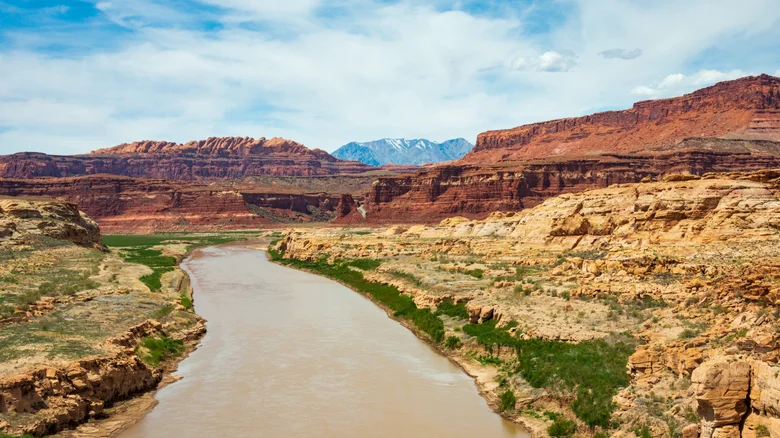Experience Utah’s Cataract Canyon: A Thrilling Whitewater Rafting Adventure Through Legendary Rapids
Cataract Canyon, nestled within Utah’s stunning Canyonlands National Park, is one of the top destinations for whitewater rafting enthusiasts

Cataract Canyon, nestled within Utah’s stunning Canyonlands National Park, is one of the top destinations for whitewater rafting enthusiasts in the United States. Famous for its intense rapids ranging from class III to class V, especially during the spring snowmelt, this 46-mile stretch of river offers an adrenaline-pumping journey through some of the most breathtaking canyon scenery in the Southwest.
Where is Cataract Canyon and How to Get There?
The rafting route starts where the Colorado and Green Rivers meet, creating approximately 14 miles of wild whitewater within the canyon itself. Depending on your chosen starting point, a full trip through Cataract Canyon can span nearly 100 miles.
Most adventurers begin their journey in Moab, Utah—either from the Moab boat dock or a bit south at the Potash boat ramp. For a quieter, longer experience, many opt to launch upriver from the city of Green River. This charming town offers easy access to scenic canyon landscapes and is well connected by Interstate 70 from both east and west directions. Moab can be reached via US 191 off I-70.
For those flying in, Salt Lake City International Airport is the nearest major airport, approximately 238 miles away. Regional airports such as Grand Junction Regional (114 miles east) and Canyonlands Field Airport near Moab (just 18 miles) provide convenient alternatives. Rental cars are readily available at all these airports, making the trip to the river smooth and hassle-free. Local outfitting companies offer full gear rental and guided tours to ensure a safe and exciting rafting experience.
The Route: From Calm Waters to Wild Rapids

Starting on either the Green or Colorado Rivers, initial stretches of the trip are relatively calm and family-friendly. The Green River side features Labyrinth Canyon, known for gentle, flatwater paddling suitable for all ages. Mineral Bottom in Stillwater Canyon is another popular launch spot on the Green River.
Meanwhile, launching from Moab gives rafters access to a class III section of the Colorado River, also suitable for less experienced paddlers. The excitement intensifies when the two rivers converge at Cataract Canyon.
A notable point is near mile 54.6, where rafters receive their first warning about the upcoming series of rapids. Here, a logbook allows trip leaders to communicate and find potential campsites. Over the next 14 miles, thrill-seekers face more than 30 rapids of varying difficulty.
Iconic Rapids and Takeout Points
At approximately mile 66, rafters encounter three legendary rapids: Big Drop 1, Big Drop 2, and Big Drop 3. These rapids include one class III and two class IV sections tightly packed within a mile. During high spring runoff, these rapids become a heart-racing gauntlet with little room to stop and scout between the last two drops.
Beyond these, several smaller rapids lead to the trip’s end at Lake Powell, a common takeout spot.
Guided Rafting Trips: Safe, Fun, and Fully Equipped

For newcomers or those wanting a hassle-free adventure, multiple local companies offer guided rafting trips through Cataract Canyon. For instance, Holiday River Expeditions runs multi-day trips from Green River between May and September, with peak water levels and rapids usually occurring in late May and early June.
Booking during the fall is an excellent way to avoid crowds, enjoy smaller groups, and experience more moderate river conditions.
Most guided tours, such as those provided by Mild to Wild Rafting and Jeep Tours, supply everything from rafting gear to camping equipment, food, and transportation. They also handle all necessary permits, which are mandatory for overnight river trips within the National Park.
What to Expect on Your Cataract Canyon Rafting Adventure

Beyond the thrilling rapids, Cataract Canyon offers unmatched views of vivid sandstone cliffs, quiet desert landscapes, and star-filled night skies. Whether you opt for a guided excursion or a self-supported trip (with permits in hand), prepare for a mix of heart-pounding whitewater and peaceful, off-the-grid camping experiences in one of America’s most iconic natural playgrounds.








